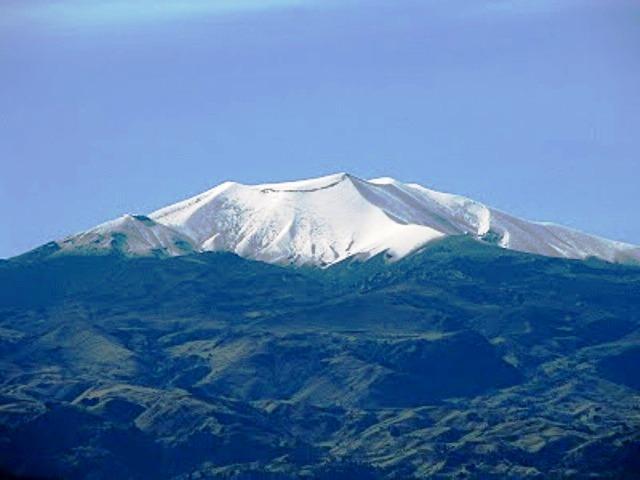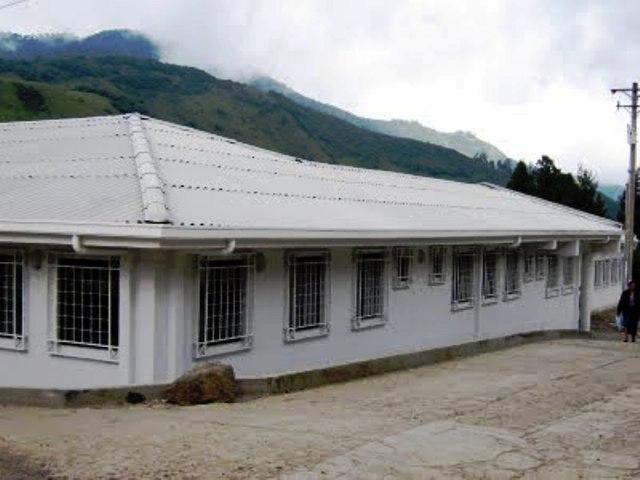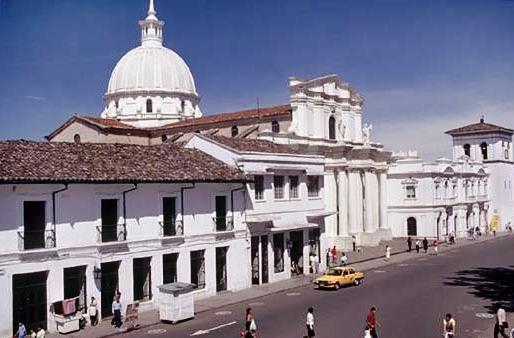Popayan, Cauca, Colombia
Suggest Place to Visit
1082
Track to location with GPS |
 |
On December 24, 1536, Captain Juan de Ampudia occupied with his soldiers a place called the hill of El Azafate, where the cacique or yasgüén lived, so that the Adelantado Don Sebastián de Belalcázar would come to found a new city. After having subdued the natives, Popayán was then declared founded on January 13, 1537 by Belalcázar, who passed to the north of Colombia in search of the mythical treasure of El Dorado. Belalcázar was also the founder of other important cities such as Quito and Santiago de Cali. Contrary to what some historical sources suggest, Belalcázar did not found the city of Pasto, a town that was actually founded by one of his lieutenants, Lorenzo de Aldana.
On August 15, 1537, once the total conquest of Popayán had been achieved, the solemn foundation ceremony of ´´la nueva villa´´ was held, preserving the indigenous name of ´´Popayán´´. The ceremony consisted of a first mass sung by the priest García Sánchez, in a humble temple built as a Cathedral on the south side of the future square. On this same occasion, the first Cabildo was installed.
Belalcázar had left Don Juan de Ampudia as his first lieutenant in January 1537 and Don Pedro de Añasco as first mayor, according to Don Juan de Castellanos in his chronicles. According to the Cabildo book, for the month of April Captain Juan de Ampudia and Francisco García de Tovar, and Messrs. Francisco de Ciessa and Luis Vejarano, Bartolomé Álvarez and Martín Alonso de Angulo, were appointed as councilors; and Juan de Sepúlveda as notary public of the council of this city, who met to point out the lots where the Spaniards who until then inhabited the huts of the people of Pubene would build their first houses.
In 1540, Sebastián de Belalcázar was named First Governor of Popayán. From that moment on, the Spanish political system was established in each city, which included Councilors of the Cabildo, Mayors and Alguaciles and a permanent participation of the Church through a clergyman or parish priest. Belalcázar was also concerned about leaving a lasting mark on the conquered territories, for which he brought from Spain seeds of barley, wheat, sugar cane, as well as numerous domestic animals, especially cattle, horses and pigs, tools and many other elements.
After 1550, Buenaventura started the systematic entry of cattle and horses, which contributed to the formation of cattle ranches in Popayán and its surroundings. The conquest continued with the subjugation of more indigenous communities, but at the same time the political system was established that resulted in the establishment of a colonial society based on the exploitation of gold, whose possession brought with it enormous economic and political power for families. established there.
The mining and commercial boom, as well as the subsequent arrival of Spanish families of lineage made Popayán a very important city in the Viceroyalty of New Granada. The city was home to the owners of the Barbacoas and Chocó gold mines, who with their wealth created estates, built large houses and endowed the city with huge temples with images brought from Spain. It should be noted that the mining economy in New Granada occurred in cycles. It had a first stage in the mining districts of Antioquia that entered a crisis from 1620-1630 with a recession that deepened until 1680. It is here where the scene of the Popayán Government gains importance, which from that moment becomes the place where the that the mining phenomenon expands, with exceptional importance in the course of the 18th century, and still in much of the 19th century. The mining boom in Popayán created a new dynamic through the slave trade to the point that one could speak of the slave society of Popayán, which had great significance for the time.
Popayán competed with cities such as Cartagena, Bogotá and Tunja in the number of titled noblemen domiciled there. Likewise, it was the only city along with the capital, Santafé, to serve as the headquarters of a Mint erected by the Spanish Crown in the entire territory of New Granada. This largely explains the splendor that this city experienced during the colonial era and the first glimpses of the Republic, all this added to the genealogical pride of the founding families, who based the conservation of their wealth on an endogamous structure very typical of elites in different cultures and societies.
The 1983 earthquake
Because it is located in an area of high seismic risk, Popayán has been hit by several earthquakes throughout its history. The most recent of them happened on the morning of Holy Thursday, March 31, 1983, at 8:15 in the morning, the city of Popayán, suffered an earthquake of magnitude 5.5 on the Richter scale and variations of degrees VI and IX In the modified Mercalli scale, its epicenter was located 46 km to the southwest and the hypocenter was about 4,000 meters deep, its duration was 18 seconds but for the inhabitants and thousands of tourists who were for the celebration of the Processions of Holy Week and the Festival of Religious Music was an eternity of panic. There were more than three hundred dead and more than ten thousand people were left without a roof, the entire historic sector built of adobe and wall was in ruins, the public buildings and a large part of the churches, built in colonial times, were destroyed. The Clock Tower and the dome of the Main Cathedral collapsed, under the rubble of the Cathedral 90 people perished waiting for the religious services of the day. The vaults of the Catholic cemetery were opened and hundreds of corpses and remains of human bones were exposed. The ends of the runway and the control tower of the Machangara airport (today Guillermo Valencia) were semi-destroyed. The total number of demolished buildings was 2,470 houses built in brick belonging to low-income families while another 6,680 suffered considerable damage, which made up the El Cadillal, Pandiguando, La Esmeralda and Pubenza neighborhoods, the latter consisting of a group of condominiums called Los Blocks of Pubenza, where some 150 families lived, their infrastructure gave way due to the magnitude of the earthquake and caused a considerable number of deaths. The Pubenza Blocks consisted of 12 architectural complexes each with 8 apartments spread over four floors. The earthquake also devastated Timbío, a municipality near Popayán.
Popayán is a Colombian city, capital of the department of Cauca. It is located in the Pubenza Valley, between the Western and Central Cordillera in the southwest of the country. Its territorial extension is 512 km, its average altitude is 1760 m above sea level, its average annual rainfall of 1,941 mm, its average temperature of 18/20 ° C and it is approximately 600 km from Bogotá.
In 2005, UNESCO designated the city of Popayán as the first city of gastronomy because of its variety and significance for the intangible heritage of Colombians. Cauca cuisine was selected for maintaining its traditional methods of preparation through oral tradition. On September 28, 2009, the Holy Week Processions in Popayán were declared by UNESCO as a Masterpiece of the Oral and Intangible Heritage of Humanity.
Its name, according to the oral tradition of the city, comes from the Cacique Payán, chief of the indigenous tribe that inhabited the area around the mountain today known as Cerro de la Eme or Las Tres Cruces when the Spanish conquerors arrived.
According to the historian Arcesio Aragón, the origin of the word is Pampayán, which is made up of two Quechua words: pampa, whose meaning is, valley, site, pass; and yan, whose meaning is river. River pass, since the Cauca river passes through there.
The territorial extension of Popayán is 512 km² and its average annual rainfall is 1,941 mm. Being at an altitude of 1,737 meters above sea level (measured in the square of the church of San Francisco) and very close to Ecuador, it has an average temperature of 19-21 ° C throughout the year, reaching maximum temperatures in the months of July, August and September at noon hours -up to 29 ° C- and lows of 10 ° C in the early morning hours in summer. It also has extensive flat and undulating areas, located mainly in the vicinity of the Cauca River.
Popayán was created as a District by the Congress of the Republic at the end of the legislative period in 2007.
The colonial architecture of Popayán is one of its main attractions. The beautiful mansions that for several centuries were occupied by the most prominent families in the city, today have mostly been rehabilitated for different uses. There is also an impressive profusion of colonial temples, which recalls the leading role of the Catholic Church in the formation of the city throughout its history.
Popayán is widely known for the solemnity of its Holy Week processions during which the passion and death of Jesus Christ is commemorated. In the processions, which since the 16th century have been carried out uninterruptedly at night between Holy Monday and Holy Saturday, ancient religious images arranged on wooden platforms called ´pasos´ parade through the streets to represent the events that took place during the passion, crucifixion and death of Jesus. The steps are carried on the shoulders of the traditional freighters through the streets, in a route traced in the shape of a half cross since the dawn of the Conquest, which includes the main churches and temples of the city. Popayán's Holy Week processions were declared ´Master Work of the Oral and Intangible Heritage of Humanity´ by UNESCO in September 2009.
During Holy Week or Greater Week, the city is also home to the Religious Music Festival, which began in the 1960s at the initiative of Edmundo Mosquera Troya and, after his death, administered by his widow Stella Dupont Arias and his children Juan Manuel and Ana Isabel Mosquera Dupont. Choirs, soloists and artists from all over the world, specialized in sacred music, participate in it. The national handicraft exhibition Manos de Oro is also held, where the work of the country's artists is exhibited.
In Popayán the Pubenza Festivities are celebrated from January 9 to 13. During these festivities, people take to the streets with bags of talc and shoe polish to celebrate with a festive spirit the racial diversity of the country (before they resorted to water, but that custom has already been left behind), in the manner of the Black Carnival and Blancos de Pasto, which was originally born in Popayán during the slave era as an escape valve for the harsh segregation prevailing at the time.
Since 2003, in the month of September, the POPAYAN NATIONAL GASTRONOMIC CONGRESS has been held. This festival of gastronomy, determined the distinction by UNESCO, of the Gastronomic City of Humanity in 2005 as a cultural heritage belonging to the network of creative cities of the United Nations. The Congress is organized by the Popayán Gastronomic Corporation and in its 7 editions the following have participated as special guest countries: Peru, Brazil, Spain, Chile, Mexico, Italy and France. It is currently recognized as the second most important popular event in the department of Cauca. Because it is an academic format, it stands out among the other gastronomic competitions and is classified as the only one at the national level.
The people of Popayán are lovers of music. It is said that among the natives there were good interpreters, highlighting the performance of the chirimía which is made up of flutes [cane traversing], guacharacas, tamboras, castrueras and triangles, which makes its appearance in the traditional festivals of Popayán, especially in the Aguinaldos
On the Popayán plateau there are also peasant string ensembles, made up of three guitars and maracas that have incorporated walks, meringues, corridors and boleros in vocal and instrumental modality into their repertoire.
Popayán is the only place in Latin America to have been declared a UNESCO City of Gastronomy, thanks to the offer of its local cuisine. Since 2004, the Popayán International Gastronomic Festival has been held annually in August. In each edition it has a guest country and a list of prominent speakers, among which some of the most famous chefs in the world stand out.
The typical dishes of the city are a legacy of Spanish and indigenous cultural interaction, integrating components typical of the region with fruits brought from Spain.
Comments
We don´t have yet any comments about:
Popayan
Popayan
Be the first to leave a comment as it is very important to inform other people
Outros locais a visitar
Within a radius of 20 km from:Popayan
Puracé Natural National Park |
| 19,0 Km |
 |
Puracé |
| 19,0 Km |
 |
Hotel reservation near Popayan within a radius of 20 km
Why to book with BOOK HOTEL ALGARVE
The best prices
Our partnerships with the world´s largest operators offer research on the best market prices.
More options
At Rotas Turisticos you can book the hotel, buy the air ticket, book the transfer from the airport to the hotel and vice versa, book the local excursions, rent the car, take travel insurance and consult the places to visit and where to go.
Holiday Tips & Destinations
Hundreds of holiday destinations with all the options that allow you to easily choose the destination that best suits your dream vacation.
BOOK HOTEL ALGARVE
Links






